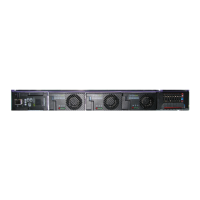010-619-J0 Rev B Page 41
8 System Startup
8.1 Check System Connections
• Ensure AC is off, battery is disconnected, and all power modules are removed from the shelf.
• Verify the polarity of all connections.
8.2 Verify AC and Power The Shelf
• Install one power module.
• Verify AC input voltage is correct and turn on the corresponding AC input feeder breaker.
• The power module OK LED should illuminate after a preset start delay.
• Using the controller, test functionality of various module alarms and controls.
8.3 Check Battery Polarity and Connect
• Verify correct battery polarity using a voltmeter (ensuring no cells or batteries are reversed).
• Connect battery as required to the output of the system or turn on battery breaker.
• Install remaining power modules.
• On the controller, set Float and Equalize voltage to the levels specified by the battery manufac-
turer.
• For some systems, the default setting for low AC voltage alarming is 180Vac. For nominal 120Vac
operation, it is recommended to reset this value to 100Vac.
• Using the controller, test the functionality of various module alarms and controls. In addition,
perform a load test with the system using a resistive load box as needed.
8.4 Controller Reset
8.4.1 Soft Reset (CXCM1+ only)
The reset button located on the front panel of the CXCM1+ is for restarting the microprocessor. When
pressed momentarily, the unit beeps twice then resets. The front-panel LEDs illuminate temporarily, and
then extinguish after the system has finished its 15-second self-test.
NOTE: This does not apply to the CXCM1 HP.
8.4.2 IP Address Reset (CXCM1+ only)
To reset the IP address, press and hold the front panel reset button for three seconds. The CXCM1+
unit beeps three times, IP address resets to 10.10.10.201 and DHCP is disabled. The settings are saved
and the unit then resets.
This reset allows local access; e.g., with a laptop and a standard network crossover cable. See current
version software manual for details.
NOTE: This does not apply to the CXCM1 HP.

